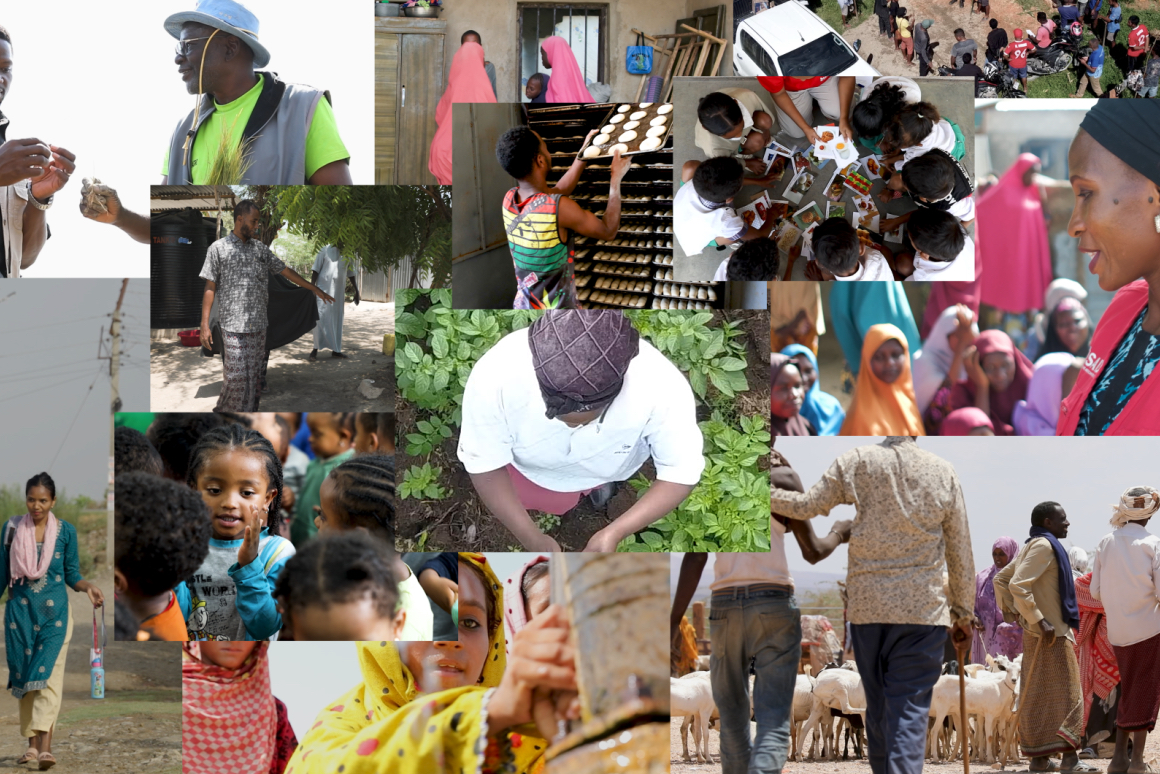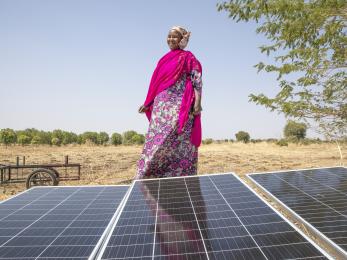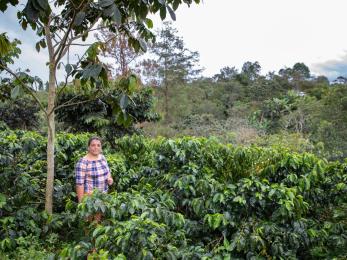Going mobile: How phones have become a critical farming tool
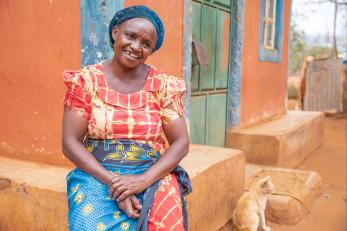
When planting season arrives, Eleanor gathers what seeds she can find and hopes for the best. She gently places them in neat rows of crumbly red soil, using the same techniques her neighbors use, not really knowing if they’re correct. She listens to the radio, putting her faith in an unreliable forecast. And then she waits.
Around 75 percent of people in Kenya earn at least part of their income this way — from agriculture, including growing crops, raising animals and running related businesses. And the majority is small-scale, rain-fed agriculture, like Eleanor’s farm.
For her and millions of others, whether they can feed and provide for their families is tied directly to the success of their farm. But a host of systemic challenges have made this livelihood a dangerous gamble.
Poverty is high, with around half the population living on less than $1 per day, making supplies like fertilizer, pesticide, medicine, animal feed or other beneficial investments out of reach for many famers. In rural communities, where most farming takes place, the seeds available are often old, mislabeled or poor quality, and unlikely to produce to their full potential, if at all.
Additionally, there is usually not a market for farmers to sell what they have grown at a fair price.
Local weather and rainfall information, which establishes when farmers should plant, is chronically incorrect. And there is little to no access to formal agricultural instruction, meaning they rely on communal knowledge when determining what to plant, and how to prepare their land and treat their seeds — practices that may not be appropriate, but are all they have.
“Initially we would just do things locally without knowing whether we are doing it the right way or the wrong way,” Eleanor explains, of the conventional way of farming in her community. “We were just taking chances without really knowing what we were doing.”
And when it failed, her only recourse was acceptance — even if she lost everything. “There was very little I could do about that,” she says.
An unreliable livelihood complicated by climate change

On top of all this, Eleanor’s already-vulnerable way of life is being made more fragile by the effects of climate change.
“There used to be enough rainfall in the area, and the harvest used to be good and we could predict when the rains could come and [we should] start planting,” she says. "There is a lot of change between those times and now.”
Weather shocks — drought, extreme temperatures, flooding — have been happening at a more frequent and unpredictable pace, and five years of drought conditions across the country have destroyed crops, dried up animal pasture and fueled hunger.
Eleanor remembers the worst of it, in the beginning, when the drought was so bad nearly all her animals starved to death, and her family had to survive on emergency food assistance from the government.
“During that period things were almost impossible for us,” she says. “I was getting desperate.”
Even today, after another poor rain earlier this year, the country has suffered a near total failure of its maize crops, a staple food source; an estimated 3.1 million people are expected to be food insecure by October; and fields across Eleanor’s community are parched and desolate.
When yields are low like this, “it means [people] have to reduce the number of meals they take in a day,” Eleanor says.
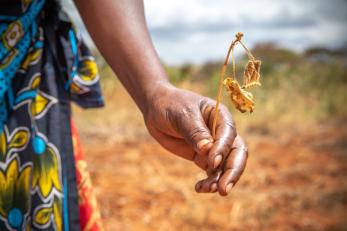
As she walks her own dusty land, she points to the withered remains of a legume called green grams, row upon row of small, brown seedlings dried up at only a few inches tall.
These are the crops she would normally rely on to meet her family’s basic needs and pay her children’s school fees. Without the opportunity to earn that money, she traditionally has only two options to cope: make ends meet with a combination of other earning sources, like informal day labor, making bricks or migrating to another area for work; or sell off her assets, like land, animals or equipment, which means losing an investment and an important source of stability.
“It is a short-term solution to address the burning issue at that particular time,” Eleanor says.
Building livelihood security with technology
While Eleanor faces many of these same struggles year after year, one thing is different for her this season: her crops are insured.
Eleanor participates in Mercy Corps’ AgriFin program, which uses mobile technology to provide farmers with services to improve their farms’ production and earn more income. Mobile phones are a common and critical form of connectivity for people around the world, including those in developing countries. In Kenya, almost 90 percent of adults report owning one, making the technology an effective way to reach farmers like Eleanor with resources they otherwise don’t have to strengthen their livelihoods and grow more food.
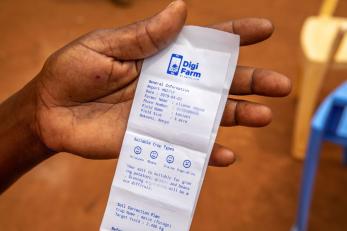
Through the program, Eleanor can order seeds for a specific cash crop — something with a market demand to grow in a larger quantity — and sell the yield to a commercial buyer. The seeds are high quality and come automatically bundled with insurance so if the harvest fails, like it did this year, she doesn’t lose her investment and fall farther into hardship.
The seeds, and other supplies like fertilizer and animal feed, are stocked at local retailers so they are easy to access, and many can be purchased on loan if necessary, which is critical for farmers with few financial resources.
“I never knew that there were certified seeds suitable to this area, suitable to our climatic conditions,” Eleanor explains. “Now we have a place where we can get certified seeds at a fair price.”
The program also offers soil testing, which Eleanor ordered to verify what crops are most suitable for her land, and SMS-based training, so she can use her phone to learn how to raise different crops and animals and build diversity in her production. Through a new partnership with NASA, the program will also begin providing farmers with more accurate weather information so they can better prepare for the growing conditions ahead.
“Initially there were no such services,” Eleanor says. “[Now] knowledge has been imparted to us, and we can engage in the best agricultural practices.”
Helping farmers look forward
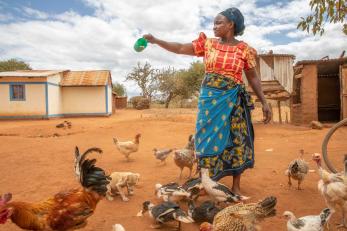
Last year, during a good rainy season, Eleanor purchased seeds to grow a new crop — sunflower — through AgriFin. Because the seeds were certified and she had guidance to grow them properly, she produced a successful harvest which she was then able to sell to a buyer identified by the program.
The venture earned her enough income to pay her children’s school fees and start an emergency fund, something she couldn’t do before. “I was happy about it and I realized that [the program] is a friend,” she says.
This year, because of the crop insurance, drought does not equal total loss for her for the first time ever.
“I have some hope that I will not lose everything, no matter the weather condition,” she says. “I am more comfortable … now. I don’t have worries.”
With this system of resources in place, farming can be an investment in the future — instead of a wager on it.
“Without the kind of information that I’m getting … I would be in a worse position,” Eleanor explains. “The farmers could be in a worse position.”
Already Eleanor says her family’s income and access to food has improved, and she’s looking forward to what else is possible. “Through the benefits I’m getting … [my] livelihood will improve and the children will be in a position to go to school regularly,” she says. “[AgriFin] is empowering us to gain new experiences.”
